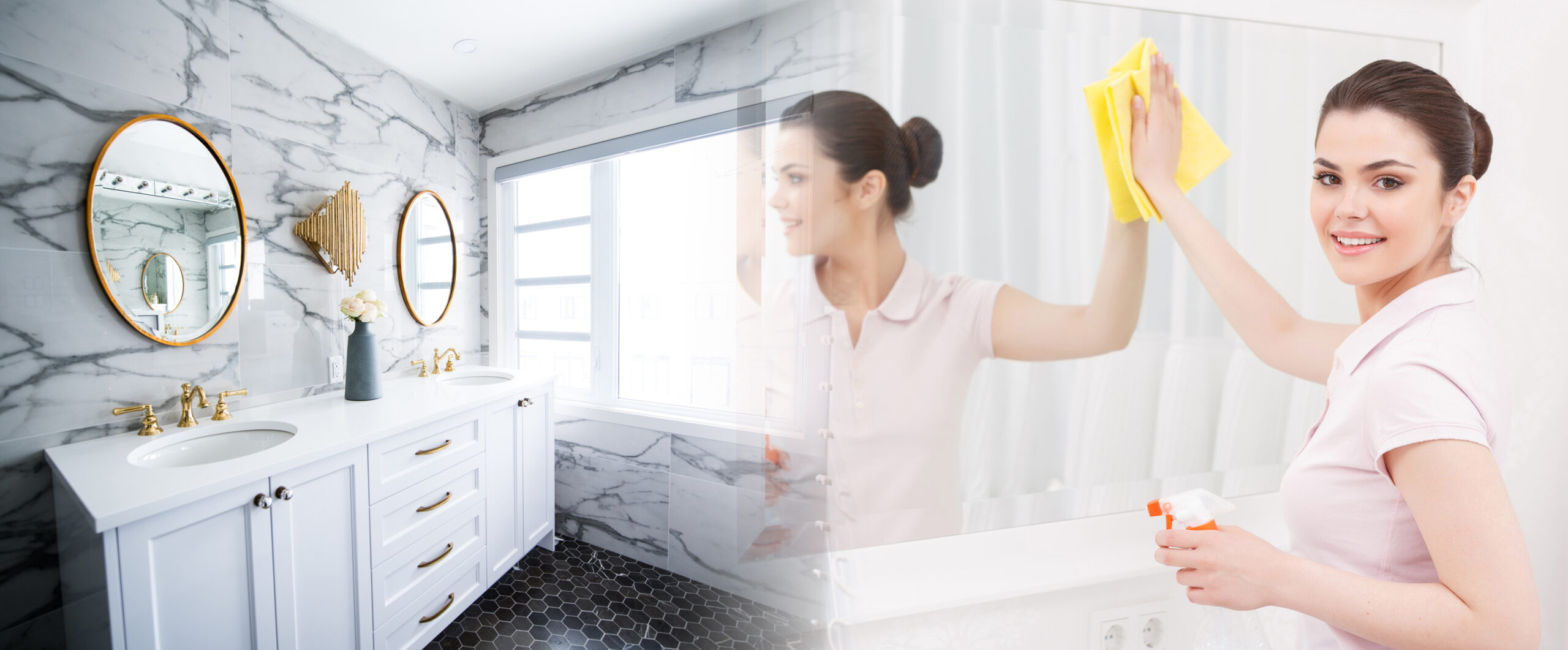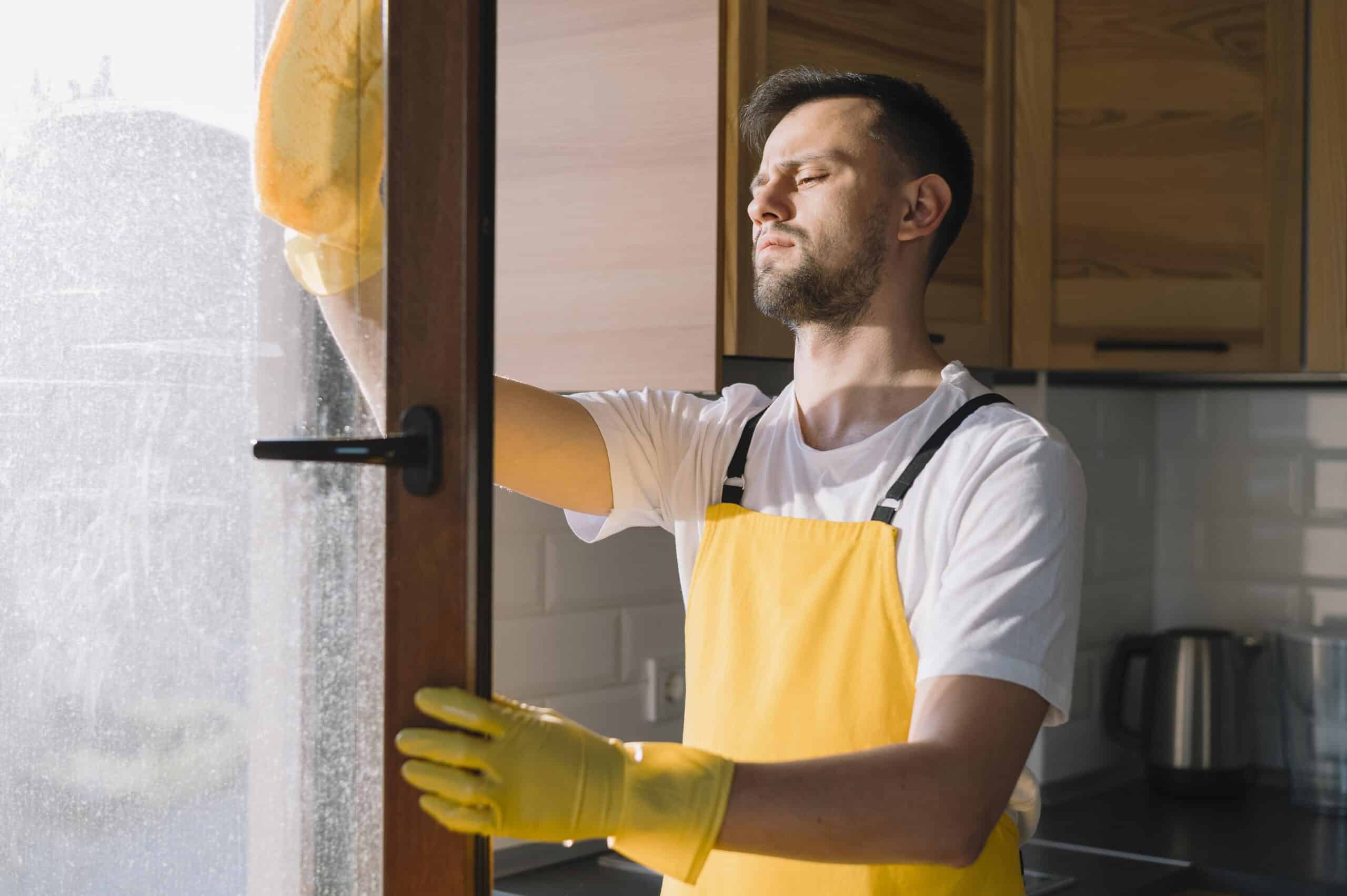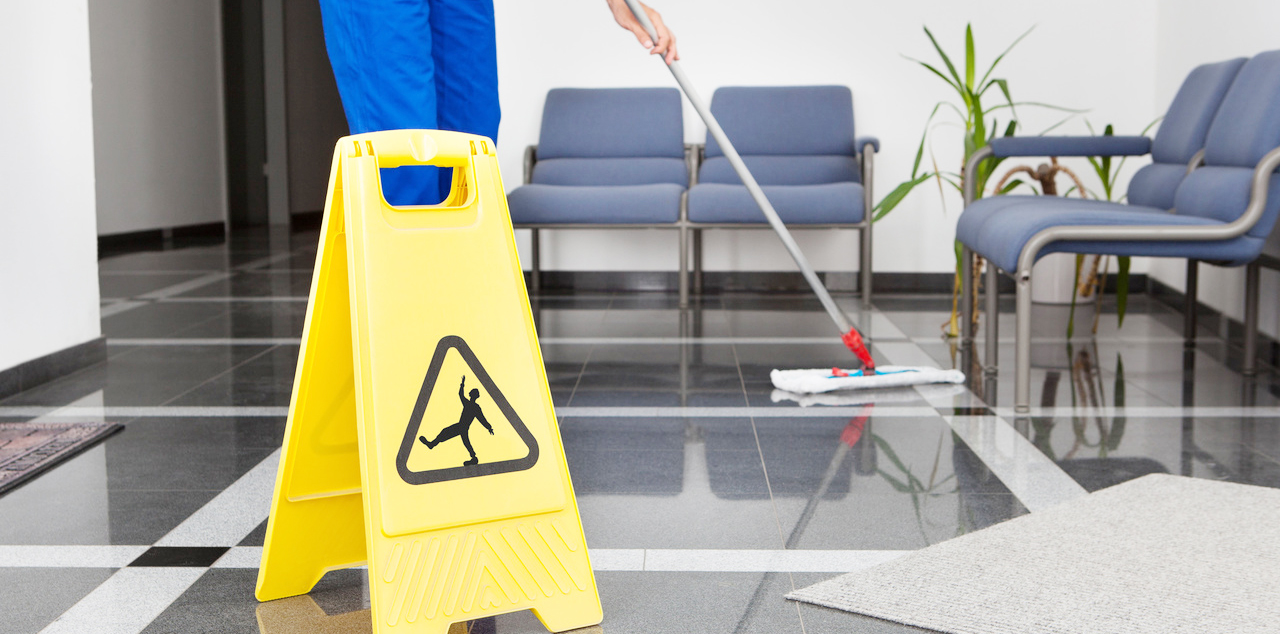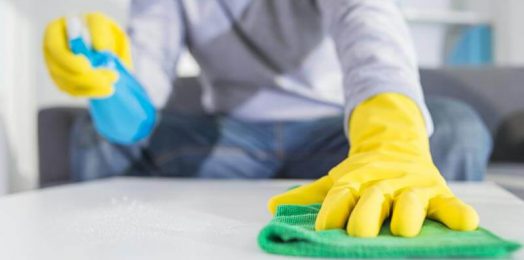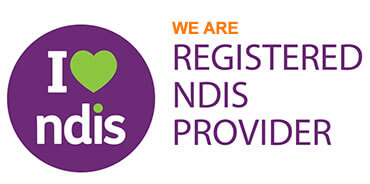How To Effectively Clean A Mirror
Is it time to do some dreaded spring cleaning? Your mirrors are a surface that you shouldn’t neglect. After giving your glass surface a good cleaning, you should be feeling very proud of yourself. However, when you glance back a few minutes later, the surfaces are foggy rather than glossy and clear.
It is a frequent and frustrating problem that may be easily avoided if you properly clean your glass shower doors, windows, and mirrors. You must maintain the cleanliness and brightness of these mirrors, regardless of their size.
Only in this manner will you be able to see precise reflections that are not obscured by debris, dust, or the buildup of dirt or germs on the surface of the glass.
Table of Contents
When To Clean Your Mirrors
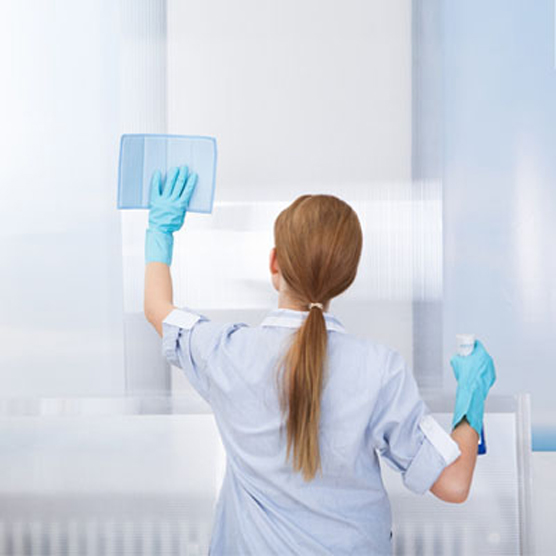
An excellent question to ask is when you should be cleaning your mirrors? Should you be doing it daily, weekly, or monthly? To keep your mirrors clean, you can start by wiping them down once a week to keep dust, fingerprints, and other smudges off of them.
If you have a larger family and your bathroom mirrors are prone to smudges, a simple wash down in the morning can keep them looking clean. The good news is that this is a quick and straightforward task that can easily be included in your regular cleaning schedule.
Stain Pre-Treatment And Cleaning
Begin by checking the mirror’s overall condition
Your mirror may have collected a particular type of dirt that may only be removed using specialised cleaning chemicals, depending on where and how you use it. Pre-treating limescale or calcium deposits is a good idea before tackling other types of stains.
Calcium deposits may be identified by their white color and somewhat gritty feel. Limescale is tough to remove and appears as a milky white coating on the surface of your mirror. It may be removed using a wet cloth and using white vinegar. In the same vein, lemon juice, pickling vinegar, or lime juice work well for removing these stains.
Compile a mirror cleaning kit
Create a mirror cleaning kit with all the supplies necessary. Ordinary rags or paper towels may leave lint or create scratches on your mirror if you plan to use them often. Lint may be avoided by using a microfibre cloth. As an additional precaution, you can create a cleaning checklist to ensure that you have the following items on hand: a bucket, a cotton cleaning cloth, and white vinegar.
Combine your cleaning solutions
You can now combine your mirror cleaning ingredients. Alternatively, you may use store-bought window cleaner, which is widely accessible. But white vinegar is an inexpensive and safe mirror cleaning alternative that will quickly cut through the buildup on your mirror. You can easily create a white vinegar window cleaner by diluting one part white vinegar with four parts warm water in a bucket.
A common rule is to use one cup of white vinegar for every four cups of water. Alternatively, you may use a spray bottle, which can be purchased in the home goods department of most shops, to spritz your mirrors with your cleaning solution. You may avoid mineral deposits on your mirror by using distilled water instead of tap water if you are aware of hard water in your area.
Use rubbing alcohol
Following this, you can use rubbing alcohol to pre-treat tough buildup and help to isolate and eliminate problem areas one at a time. You can do this by using a rubbing alcohol-soaked cotton cloth. Because rubbing alcohol evaporates so rapidly, you should do this job as soon as you can to avoid wasting any.
Cleaning The Bathroom Mirror
Remove excess dirt and debris
Start by cleaning the mirror of any filth, crud, and muck before attempting to erase any streaks or fingerprints. Start by wiping away any accumulated residue with a cotton pad dampened with rubbing alcohol. As everyone knows, you undoubtedly have some toothpaste spatter and hairspray residue on your clothes.
Use a cleaning solution
Spray your mirror with either a glass cleaner or a vinegar solution and let it dry. It is essential not to overspray; instead, apply a thin coating of mist. It will leak and run down the mirror if you use too much cleaner. This will make a mess and add to your workload.
Use a flat-weave cloth
Pick up the cloth with the flat-weave microfiber pattern.
Wipe down the mirror
Slide your cloth from the top left to the top right corner of the mirror. After that, do a little downward turn and return to the left side of the mirror. Continue doing this until you’ve reached the very bottom of the mirror.
How To Keep A Toilet Mirror From Fogging Up
If you want to keep your bathroom mirror from fogging up after you take a shower, use the suggestions above, but also read on to discover how to do it using a vinegar cleaning solution. Combine one cup water, one cup vinegar, and one teaspoon dish soap in a spray bottle. To mix, carefully shake the ingredients together.
Next, allow the solution a few seconds to settle on the mirror after applying it. You will then need to use a microfibre cloth or newspaper to remove the spray from the mirror. Your mirrors will not fog up; however, repetition is required every few days to keep them clear.
Mirror Cleaning Supplies You Will Need
Before we can dive straight into the specifics of how to clean your mirror correctly, let’s make sure you have everything you need.
Toothbrush and dust cloth
The first step in cleaning anything, whether it is glass or wood, is to remove the dust using a dust cloth. For those hard-to-reach areas, you can use an old toothbrush. This ensures that even the most challenging places to reach are freed from dust.
Rubbing alcohol
This is your stain remover in a nutshell, and it works exceptionally well on glass. The task will be simpler to complete if you first remove the mirror spots effectively before cleaning the remainder of the surface. You’ll also get better results in the long run.
Cotton balls
To remove stains from your mirror, mix rubbing alcohol with either regular cotton or cotton face pads. Do not use towels or sponges to clean.
Clothes that aren’t filthy
Microfibre clothes, such as those found in eyeglass cases or on-screen wipes, are familiar to you. You may use them to clean mirrors and other glass surfaces due to their flat weave, which doesn’t leave any lint in their wake.
Vinegar
A DIY glass cleaner will be created by dissolving dish soap in vinegar and water. Professionals always prefer natural cleaning solutions, so you don’t have to be concerned about chemical residue being left behind.
Effective Cleaning Tips For Mirrors
Streak-free windows and mirrors in your house may be difficult to accomplish. Even after hours of wiping and cleaning, windows can appear just as filthy as they did before. This tedious job may be simplified by using the right equipment and techniques, leaving your glass surfaces sparkling clean and saving you a significant sum over time.
1. Keep it tidy
If you want a streak-free mirror or window, be sure to clean it from top to bottom. Utilise gravity by letting the cleaner sit in places you haven’t yet cleaned. Start by wiping your way from the top of the mirror’s edge in circular motions.
Next, move downwards to the bottom of the glass to avoid getting any droplets on the freshly cleaned surfaces. Keep repeating this method as you move down the mirror.
2. Wet the mirror with a damp cloth
Wipe off any remaining moisture with a second clean cotton microfiber cloth after dampening it in your cleaning solution bucket. If you use too much cleaning product on your mirror, your microfibre cloth may not be able to dry it thoroughly.
3. Adjust your microfibre cloth
Simply fold your microfibre cloth in half, vertically and horizontally. When one side of your microfibre cloth becomes filthy, just flip it over and utilise the clean side. Use a clean inner portion of your cloth the next time it becomes filthy, and so on. Any soft, lint-free cloth will do. Mirrors and glass may be cleaned using bar towels, according to some.
4. Alternate your viewing angle
A shift in perspective may show a spot on your mirror that you missed when cleaning it off. Look at your reflection from various angles, and if you see any discolourations, you should keep these things in mind. First, do not use too much cleaner; use just enough so that you can see the dirt and grime.
Exhaustively wring off any leftover moisture from your microfibre cloth. Now, clean the problem areas with your damp microfibre cloth and then dry and buff with a dry microfibre cloth.
5. Make use of a squeegee
It’s quite surprising the amount of difference a single tool can make when used on glass. If you have to re-wipe an area of glass because the initial wipe didn’t remove all of the cleaning solutions, you will have streaks. However, to make your job easier, you can remove any excess cleaning solution from the glass using a squeegee.
This way, cleaning your mirror is a breeze. If you’re going to be washing big windows, you’ll want a long-handled squeegee. It may also be used to clean shower walls and doors.
6. Use cotton swabs to wipe down corners
Residue tends to accumulate in the corners of the glass no matter how hard you try, and getting to that residue may be tricky without the proper equipment. Cotton swabs are perfect for cleaning the nooks and crannies of your home’s windows. It’s just the right size and gets the job done well!
7. Try making your glass cleaner
Homemade treatments may be more effective, cheaper, and free of substances you don’t know about. For homemade glass cleaner, combine 1 cup rubbing alcohol with 1 cup water and one tablespoon of vinegar.
Isopropyl alcohol and white vinegar combine to create a glass and mirror cleaner that rivals commercial products in terms of speed of evaporation. Hard tiles, chrome, and other shiny surfaces benefit from the application of this solution.
Diverse Solutions For Cleaning Glass
Mirror cleaning may be accomplished in a variety of ways and with a variety of products. To find the best option for your specific requirements, you’ll have to go through a process of trial and error. People use a wide range of remedies, including, wipes, glass cleaners with or without an ammonia base and glass cleaners with foaming agents. Here are couple of things to avoid when cleaning your mirrors:
Expired products
It’s best to avoid using products beyond their expiration date or cleaning solutions that have been sitting about for more than a month since they may cloud the glass.
Newspaper isn’t the way to go
Newspaper was formerly a helpful cleaning tool for the home, but today’s low-quality ink makes that no longer the case, so avoid using it.
No paper towels
Paper towels, too, should be avoided because of the lint-like residue they leave behind.
Check your products
To avoid leaving streaks on the mirror after cleaning, stay away from cleaning products that leave suds on the surface.
Wipe before you start
Never use a cleaning agent on a mirror until all dust, grime, and stains have been removed. Any other approach just adds to the complexity of your project.
Don’t touch the mirror
To prevent leaving unattractive stains and streaks on the mirror, try not to let the mirror come into contact with your fingers or hands as much as possible.
If All Else Fails Seek Professional Help
With the information and tips mentioned above, you may now feel that you have acquired the necessary knowledge to keep your mirrors clean. However, you may not feel like you can’t do an adequate enough job. Certain areas still feel like they are lacking. This may be the time to call in the professionals who can handle all the dirt and grime buildup on your mirrors.

